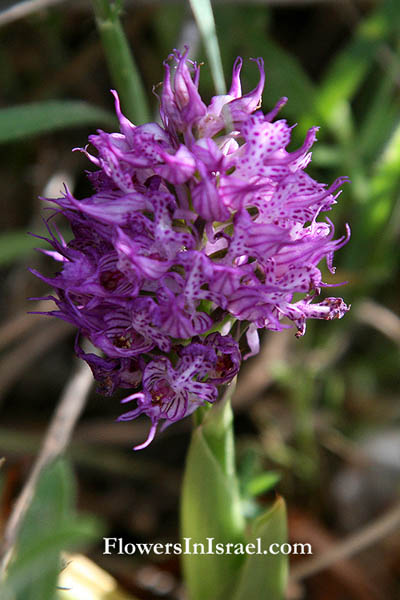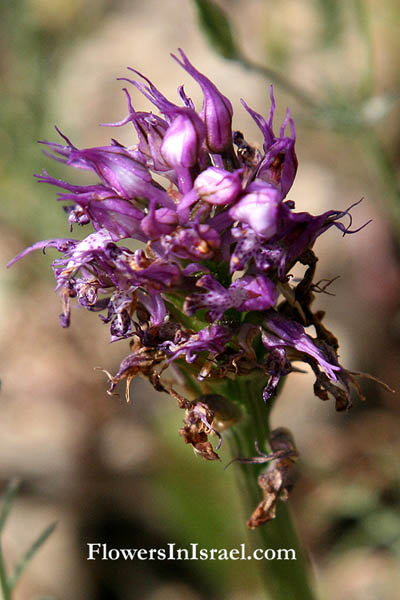Three-toothed orchid,
Hebrew: סחלב שלוש-השיניים, Arabic: اوركيد مسنن
| Scientific name: | Orchis tridentata Scop. | |
| Synonym name: | Neotinea tridentata (Scop.) R.M. Bateman, A.M. Pridgeon & M.W. Chase | |
| Common name: | Three-toothed orchid | |
| Hebrew name: | סחלב שלוש-השיניים | |
| Arabic name: | اوركيد مسنن | |
| Family: | Orchidaceae, סחלביים |

|
| Life form: | Geophyte | |
| Stems: | Stalk bearing blooming flowers is only between 12-25 cm tall | |
| Leaves: | Alternate, rosette, entire | |
| Flowers: | Raceme inflorescence, first cone shaped, later short and egg-like shaped; tepals arranged into a helmet are pinkish violet with a somewhat dark venation;the three lobed lip is whitish -to -pinkish and covered all over with deep violet spots | |
| Fruits / pods: | Achene | |
| Flowering Period: | March, April, May | |
| Habitat: | Batha, Phrygana | |
| Distribution: | Mediterranean Woodlands and Shrublands, Montane vegetation of Mt. Hermon | |
| Chorotype: | Mediterranean | |
| Summer shedding: | Ephemeral |

Derivation of the botanical name: Orchis, ορχιϛ, "testicle" (here, shape of), from the rootform of some species. For that reason, Orchis has been regarded since antiquity as an aphrodisiac. tridentata, three-toothed. Neotinea, Latin Tinea a moth; Neo Greek prefix signifying new, or fresh. This genus was originally Tinea, to which the younger Keichenbach prefixed Neo, to distinguish it from Tinea, a well-known genus of small moths. The Hebrew name: סחלב, sahlav, Arabic sahlab, corrupted from tha'lab in husa al-tha'lab (=the fox’s testicles), the Arabic name of the tubers of the Orchis mascula (so called from the resemblance of the roots to testicles).


|